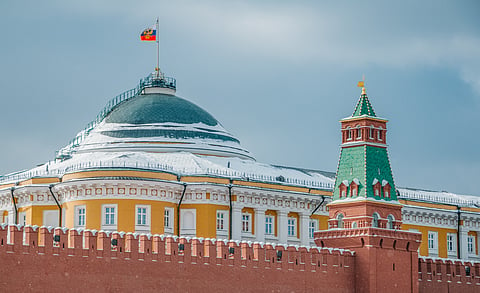

If you look at a map of Moscow, the heart of the city is not a modern skyscraper or a shopping district. It is a vast triangular fortress with ruby-red stars on its towers, centuries of stories in its walls, and a reputation known across the world — the Kremlin. For outsiders, the word often feels heavy, almost mysterious, as though it belongs to secret meetings and powerful decisions. But the Kremlin is also a place of kings, invasions, celebrations, architecture, faith, art and moments that shaped world history. It is not just a political centre; it is a symbol of how Russia grew, transformed and rebuilt itself again and again.
To understand the Kremlin is to understand layers. A fortress. A palace complex. A political symbol. A historical survivor. A cultural museum. A global power centre. And above all, a reminder that places can shape nations just as much as nations shape places. The Kremlin’s walls have seen coronations, invasions, revolutions, negotiations and celebrations. They have reflected the hope, fear, pride and ambition of the people who lived within them. That is why it continues to stand at the heart of Moscow today — steady, silent and watching, as yet another chapter of history unfolds around it.
The story of the Kremlin begins long before glass buildings or metro lines existed. In the 1100s, Moscow was just a small settlement of wooden houses and muddy pathways. To protect it from raids, the people built a wooden fort on a hill beside the Moscow River. This early fortress was called a kreml, meaning “fortress” in old Russian. Over time, Moscow became more important, and so did its fort. Wooden walls were replaced by white limestone. Later, in the 1400s, Italian architects — the same people who shaped Renaissance cities — were invited to rebuild it in strong red brick. This is the Kremlin we recognise today: a mix of Russian tradition and European engineering, a blend of sturdy defence and graceful beauty.
Walking through the Kremlin today feels like flipping through a giant history book written in stone. Inside its walls stand palaces, cathedrals and government buildings, each one from a different moment in time. There is the Cathedral of the Assumption, where Russia’s early rulers were crowned. There is the Grand Kremlin Palace, with glittering halls and floors that shine like mirrors. There is Ivan the Great Bell Tower, which once stood as the tallest structure in the city, meant to remind everyone who ruled and what they believed in. Even the famous Tsar Bell and Tsar Cannon — both enormous and mostly ceremonial — reflect a time when rulers displayed power through grandeur rather than use.
But the Kremlin is not just a museum. It has always been the nerve centre of Russian authority. Princes ruled from here. Czars issued decrees from here. Soviet leaders conducted meetings that affected the world from here. Today, the Russian President works from the Kremlin. When news reports mention “a statement from the Kremlin,” they mean the leadership at the very top of the Russian state. Over centuries, the fortress went from defending a small town to representing an entire nation’s political identity.
What makes the Kremlin fascinating is how it has survived everything history threw at it. Fires swept through Moscow many times, but the Kremlin was rebuilt. Invaders tried to destroy it — Mongols, Lithuanians, Poles and even Napoleon’s army. During World War II, when German bombers targeted Moscow, the Kremlin was disguised with painted tarps and fake buildings so it looked like an ordinary neighbourhood from the sky. The strategy worked: much of it was spared. The Kremlin has been cracked, rebuilt, repainted and restored, yet it remains standing like a stubborn witness to time.
There is also a softer, more artistic side to the Kremlin. Its cathedrals are filled with frescoes painted by ancient masters whose hands never touched modern brushes or lights. Its walls glow a deep brick-red in the evening sun. Its towers carry star-shaped ornaments made of ruby glass that shine even on cloudy days. Inside its museums are crowns, armour, carriages and gifts from foreign rulers — reminders that the Kremlin was once a place of royal ceremony as much as politics.
However, the Kremlin’s global reputation today comes with complexity. As modern politics changed, so did the meaning of the word “Kremlin.” In international news, it does not only refer to the physical fortress; it often symbolises the Russian government. Decisions made within those rooms can influence energy markets, neighbouring countries, diplomacy and global debates. For students learning about the world, the Kremlin is a strong example of how a historical building can become a modern symbol — one place representing both culture and political power.
Yet, despite its heavy associations, the Kremlin is still open to visitors. Tourists walk through its courtyards, stare up at its golden domes, and listen to guides explain how each stone has a story. Inside, schoolchildren sketch the towers. Adults whisper in awe at the enormous halls. Even locals, who have seen it countless times, feel a special pride when they pass by. It is the kind of place where past and present sit side by side — a working government complex inside a centuries-old fortress.